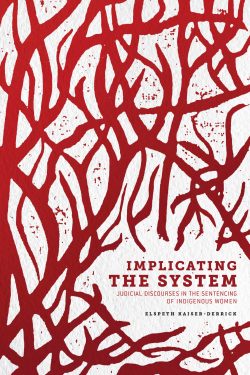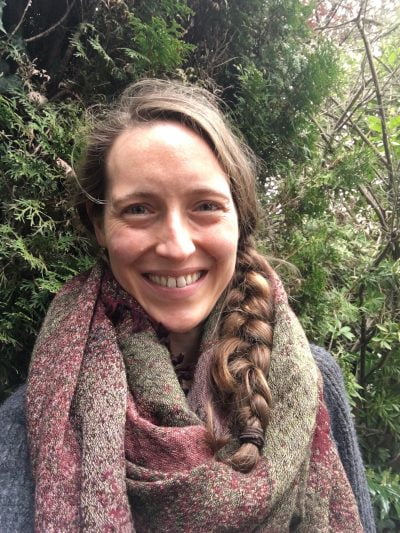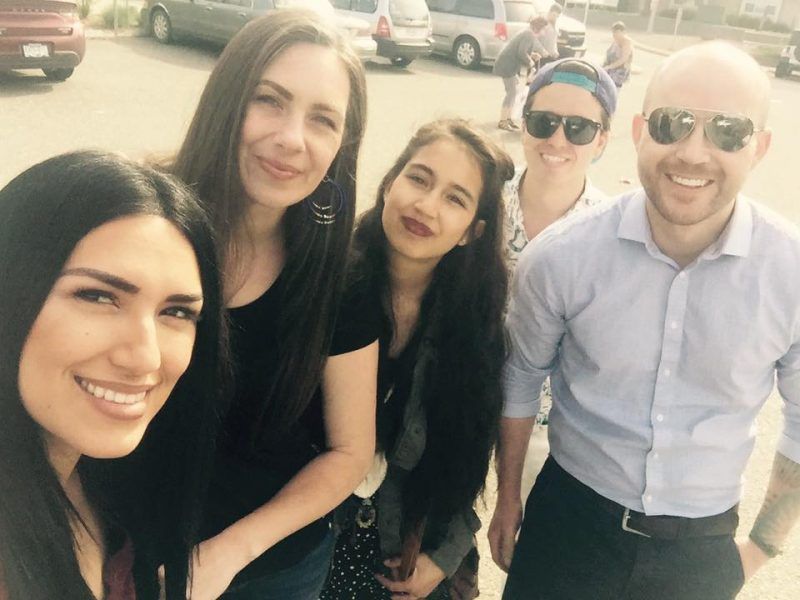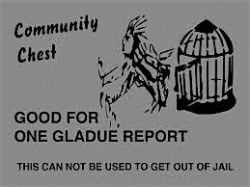#655 The Gladue rights revolution
Implicating the System: Judicial Discourses in the Sentencing of Indigenous Women
by Elspeth Kaiser-Derrick
Winnipeg: University of Manitoba Press, 2019
$34.95 / 9780887558283
Reviewed by David Milward
*
 The crisis of Indigenous over-incarceration in Canada remains an ongoing issue of national importance. Statistical estimates as of 2016 are that Indigenous inmates amount to 27% of provincial and territorial inmates, and 28% of federal inmates, despite Indigenous peoples amounting to only 3% of the overall population.[1] One measure that has been taken in response to the crisis is section 718.2(e) of the Criminal Code, which reads in part:
The crisis of Indigenous over-incarceration in Canada remains an ongoing issue of national importance. Statistical estimates as of 2016 are that Indigenous inmates amount to 27% of provincial and territorial inmates, and 28% of federal inmates, despite Indigenous peoples amounting to only 3% of the overall population.[1] One measure that has been taken in response to the crisis is section 718.2(e) of the Criminal Code, which reads in part:
A court that imposes a sentence shall also take into consideration the following principles: …
(e) all available sanctions other than imprisonment that are reasonable in the circumstances should be considered for all offenders, with particular attention to the circumstances of Aboriginal offenders.

The provision was passed in 1996, but the legal regime itself has come to be known as Gladue in reference to the seminal Supreme Court case that interpreted the section. That decision in turn emphasizes that courts are to thoroughly ascertain information as to the role of social traumas in bringing Indigenous accused before court, and to give serious consideration as to whether a sentence that does not involve jail (e.g. probation or conditional sentence) would be a more just and appropriate sentence for those Indigenous accused.[2]
The more than two decades since then have seen the provision subject to an enormous amount of debate in academic, legal practice, and policy circles. Much of the debate focuses on several issues, including whether judges take the provision seriously enough to give it any real traction, the adequacy of implementations of Gladue in different provincial jurisdictions, and whether the social forces driving Indigenous over-incarceration are too large for the sentencing process to itself adequately handle. Those debates in their immensity have tended to focus on Indigenous peoples on a general level, but with few attempts to explore gender differences and concerns specific to Indigenous women when they are caught up in the Canadian justice system.
Elspeth Kaiser-Derrick’s new book, Implicating the System: Judicial Discourse in the Sentencing of Indigenous Women, is a welcome attempt to address that gap in the literature. An undercurrent that grounds the book is the theory known as Intersectionality, which seeks to expose the multiple layers of oppression that are faced by women of racial minorities. The Intersectional gaze can reveal that women of colour face disadvantages that white women do not (but who in turn are relatively disadvantaged compared to white men) and men of the same race do not (who in turn are relatively disadvantaged compared to the racial majority).

Kaiser-Derrick, a PhD student at the UBC Law School, employs a very specific Intersectional construct, the Victimization-Criminalization continuum. The criminalization end of the continuum is a recognition that many Indigenous women have themselves committed harm, but it would be unjust to emphasize only that very limited part of the overall picture. The victimization continuum explores how those same Indigenous women have in their own turn been victimized, often multiple times, over the course of their lives. Victimization manifests in numerous ways for Indigenous women, being subjected to domestic violence, sexual violence, forced prostitution for lack of alternatives, and numerous other traumas that play out over and over again in the cases that Kaiser examines. Victimization is not limited to direct harm to the women either, but also manifests in social constraints that narrow the options available to them, such as poverty and substance abuse in reaction to trauma. The victimization end of the continuum tries to overcome the simplistic offender label that gets applied to Indigenous women by recognizing that their own criminal histories mark a reaction to their own victimization and minimal social opportunities.


The Canadian justice system at the outset would be fundamentally tilted towards treating criminal accused according to the criminalization end of the continuum, as expressed through incarceration and the stigma of a criminal record, while giving scant recognition of the victimization end of the continuum. Trying to apply the continuum in the conventional justice system very often feels like the fitting a circle into a square peg problem. Kaiser-Derrick, although recognizing that Gladue is not perfect, nonetheless argues that Gladue offers a real opportunity for the justice system to reorient itself to better engage with the continuum and thereby make real progress in providing true justice and healing for Indigenous women.

The book is fundamentally an exercise in picking apart at least 175 Gladue cases involving Indigenous women with a fine-toothed comb to assess to how well the Gladue regime can align with the continuum. Numerous cases see judges emphasizing aggravating factors and deterrence on the way to sentencing Indigenous women to jail. These cases exhibit the usual law and order bent to be expected from the standard operation of the justice system, while also showing a blithe lack of awareness of not just the victimization concerns but of Gladue itself. Another problem manifests in judicial assumptions that Indigenous women can find adequate correctional programming for their healing in prison, thereby making recourse to incarceration that much easier to justify. Those assumptions are made despite mounds of empirical evidence detailing the lack of adequate programming in penitentiaries, and that incarceration makes inmates (women in particular) worse than when they came in. These tendencies can raise the question of whether Gladue itself, even as it is meant to be an improvement, itself still amounts to a “circle in a square peg” exercise.

As in the nature of a continuum, other cases show greater awareness and willingness to engage with victimization concerns to varying degrees. For example, some cases show an awareness of the concerns, but to the point of glossing it over en route to emphasizing justifications for a jail term. Other cases may show an awareness of victimization concerns, but lack awareness of gender dynamics specific to Indigenous women. Other cases may show an awareness on some points (e.g. awareness of the personal history) but miss the point in other ways (e.g. emphasizing that she chose to commit the crime despite the apparent lack of real options in life). The best cases in her view are those rare ones where the judges fully explore the victimization dynamics and call upon probation or a conditional sentence with a solid healing plan.
Those best cases are what can realize Gladue’s potential for doing justice properly for the troubled lives of Indigenous women who get caught up in the justice system. There is still a great deal of work to be done to move judicial analysis so that a full engagement with the victimization-criminalization continuum goes from a rarity to an expected standard. Such is the hope that Kaiser-Derrick holds out for her audience. But there remain concerns even were that hope to be realized. Kaiser-Derrick herself points out that even when judges want to go with a sentence that emphasizes healing instead of jail and deterrence, the lack of available healing programs and resources has become a source of frustration. Another problem are legal restraints in the form of mandatory minimum sentences and numerous offences being listed as ineligible for conditional sentences.

I have two minor quibbles where I thought a little more attention was warranted. The book does an excellent job of dissecting cases and demonstrating how they can be placed along the continuum. But how do we get to the point where the ideal cases that fully engage with the continuum go from being a rarity to the expectation? Is it sufficient to try and align judges with the continuum by continuing judicial education through the National Judicial Institute? If that is insufficient by itself to reach the destination, are there alternatives? Another minor point is holding out the healing plan as part of a Gladue sentence as the desired destination. Are they any empirical studies of healing programs specifically for Indigenous women that would validate Kaiser-Derrick’s vision that a revitalized Gladue would actually result in progress? Even so, the book remains an excellent treatment of pressing issues facing Indigenous women across Canada that I can recommend to anyone, both in legal circles and beyond.

*

David Milward is an Associate Professor of Law with the University of Victoria, and a member of the Beardy’s & Okemasis First Nation of Duck Lake, Saskatchewan. He assisted the Truth and Reconciliation Commission with the authoring of its final report on Indigenous justice issues, and is the author of Aboriginal Justice and the Charter: Realizing a Culturally Sensitive Interpretation of Legal Rights (UBC Press, 2013), which was joint winner of the K.D. Srivastava Prize for Excellence in Scholarly Publishing and was short-listed for Canadian Law & Society Association Book Prize, both for books published in 2013. David is also the author of numerous articles on Indigenous justice in leading national and international law journals.
*
The Ormsby Review. More Books. More Reviews. More Often.
Publisher and Editor: Richard Mackie
 The Ormsby Review is a journal service for serious coverage of B.C. books and authors, hosted by Simon Fraser University. The Advisory Board consists of Jean Barman, Robin Fisher, Cole Harris, Wade Davis, Hugh Johnston, Patricia Roy, David Stouck, and Graeme Wynn. Scholarly Patron: SFU Graduate Liberal Studies. Honorary Patron: Yosef Wosk. Provincial Government Patron since September 2018: Creative BC
The Ormsby Review is a journal service for serious coverage of B.C. books and authors, hosted by Simon Fraser University. The Advisory Board consists of Jean Barman, Robin Fisher, Cole Harris, Wade Davis, Hugh Johnston, Patricia Roy, David Stouck, and Graeme Wynn. Scholarly Patron: SFU Graduate Liberal Studies. Honorary Patron: Yosef Wosk. Provincial Government Patron since September 2018: Creative BC
“Only connect.” – E.M. Forster
Endnotes:
[1] Julie Reitano, Adult Correctional Statistics in Canada, 2015-2016 (Ottawa: Statistics Canada, 2017) at 5.
[2] R. v. Gladue, [1999] 1 S.C.R. 688.
